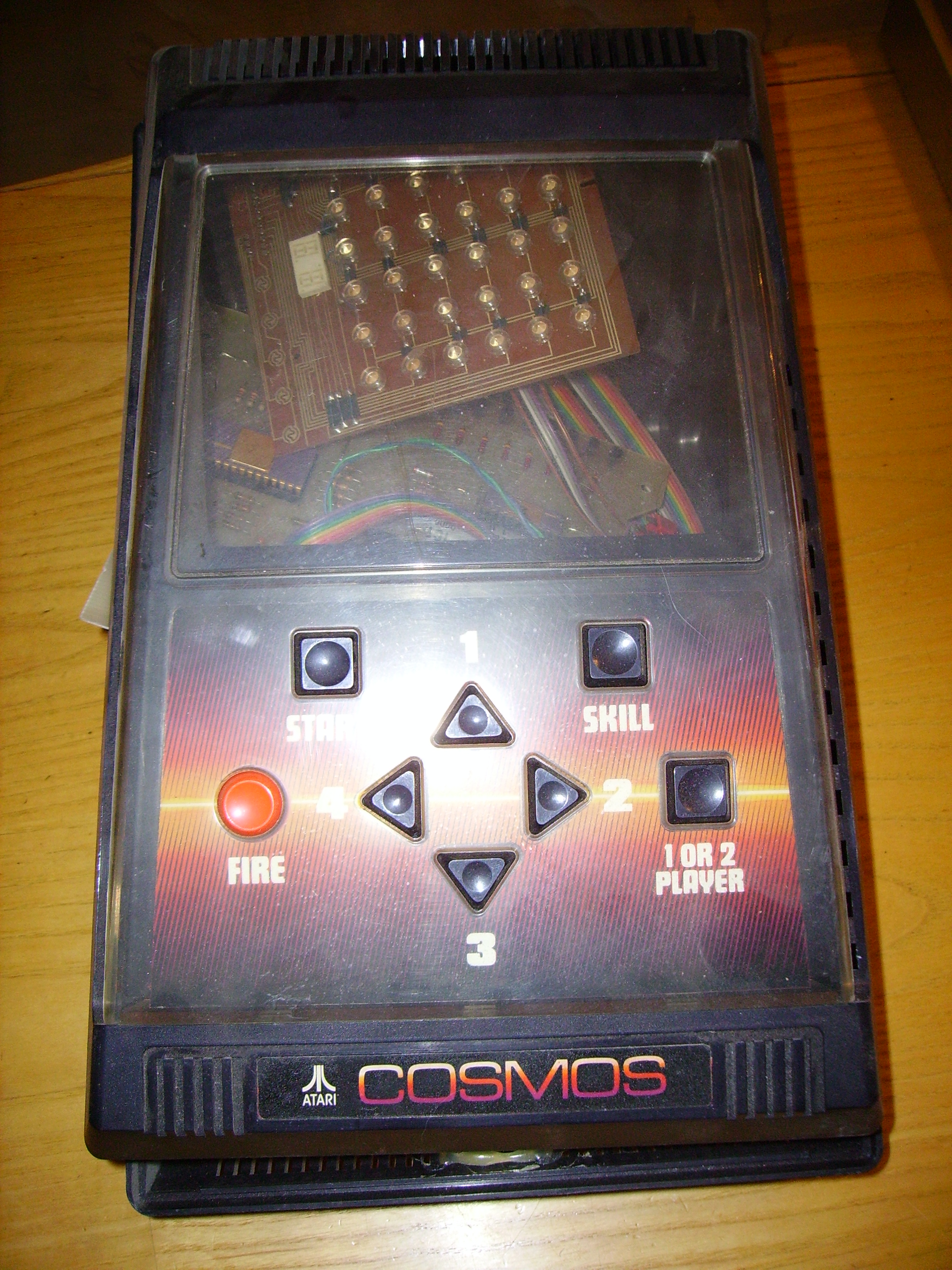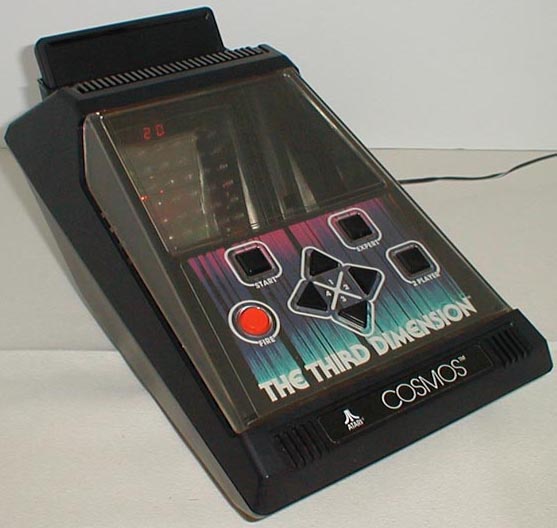

Cosmos
This was to be Atari's first foray into games incorporating holograms. The Cosmos development team was comprised of Al Alcorn, Harry Jenkins Jr., and Roger Hector. From Roger Hector: "It started with the three of us, and then we added the Holoptics Lab team. Under Al, Atari acquired all the patents in display holography, so they had the existing intellectual property locked up. After buying all the holographic patents, setting up a "secret" laser lab away from the rest of the company, and hiring some high-powered scientists to run the "tank Killer" laser, a very complex embossing technique was perfected, and holograms could finally be made for pennies apiece. Previously, holograms had to be individually developed (like photo prints), which was unsuitable for large-scale production. Steve McGrew solved the problem with a breakthrough embossing technique. We applied for patents on this, and then we started designing and prototyping several holographic toys from handhelds to the Cosmos game system.
We brainstormed designs for both flat and cylindrical animated holograms. It was all about experimenting and breaking new ground. Cosmos rose to the top. The Cosmos concept featured multi-image flat hologram cartridges superimposed over a LED matrix. The LEDs lit up silhouette pictures themed to the game and they appeared merged with the holograms. There was nothing like it. It was very inexpensive to produce, and it blew away the competition in this category.
As it got closer to production, there were additional people assigned from the Consumer Product division. Roy Nishi did the final industrial design, but unfortunately I cant remember the names of the other guys that did the production hardware and software engineering (my fuzzy memory). Our group was responsible for establishing the specs and making the holograms themselves, and a larger, separate group did the production design, put it in a box, and planned the marketing.
It went all the way through production tooling and pilot production with 8 game cartridges. We showed Cosmos at the 1981 Winter CES and Toy Fair shows, and took a year’s worth of production orders at the shows. But subsequently, Management inexplicably decided to not release Cosmos. The official reason, as told to me directly by Atari's CEO Ray Kassar, was that Atari overbooked orders for the VCS and needed more production capacity. Ray had decided to "hold off" on Cosmos "for now". This sounded to me like it was being permanently shelved. R&D was not a good place to be if the company did not want to produce new things. Even though it was fun creating new products with such a great team, I decided it would be more fun to get things out of the lab and into the market, so I left."

